Further details, including photos and updates from our graduate students, can be found in the 2020-21 magazine. To request a digital or hard copy, please email earthenvsciences@syr.edu.
Tripti Bhattacharya
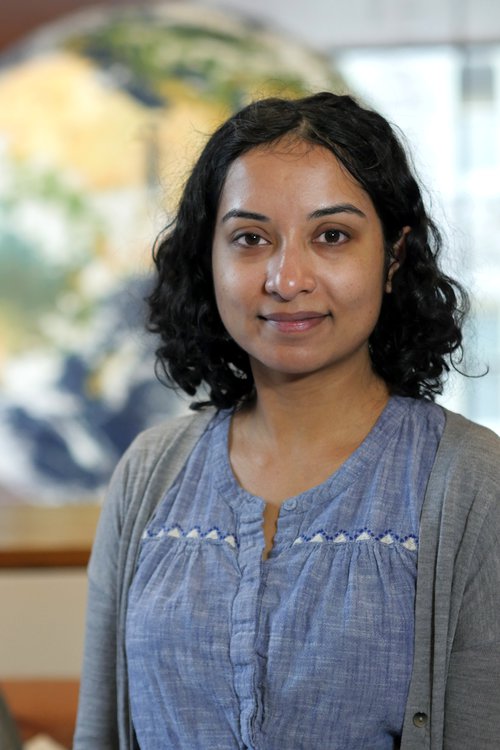
As I finish my second year on the faculty of Earth and Environmental Science, I am grateful for the continued support of the Thonis Family, and for the collegial environment in the department. My lab group, the Paleoclimate Dynamics Laboratory, is now fully operational, and features instrumentation for the extraction and analysis of a variety of biomarkers. Our group of PhD students and undergraduates are using these new instruments, as well as the powerful computing resources available on campus, to generate new insights about Earth’s climate system.
Our new lab features an accelerated solvent extractor (ASE 350), two five-foot fume hoods, a hydrogen gas generator, a gas chromatograph equipped with a flame ionization detector (GC-FID), as well as other peripheral equipment. I also recently received word that we will be receiving a grant from the National Science Foundation to set up a gas chromatograph-isotope ratio mass spectrometer (GC-IRMS), a state-of-the-art instrument that measures isotopic ratios of carbon, hydrogen, and nitrogen on specific organic compounds. This type of instrument will allow us to reconstruct ancient precipitation regimes by measuring hydrogen isotopes on compounds like leaf waxes. Moreover, the addition of this instrument enhances Syracuse University’s analytical capabilities in organic geochemistry.
This has also been a productive year for engagement with the broader geoscience community and scientific world at large. I gave invited talks at the Goldschmidt geochemistry conference in Barcelona, the Annual Meeting of the American Geophysical Union, and the biennial meeting of the American Quaternary Association. I also wrote an editorial in Newsweek on the importance of diversity in STEM fields.
This year, lab members have been on 4 publications. I recently published a first-authored article in Geophysical Research Letters exploring the controls on long-term drought in Central America over the Last Millennium. We found that droughts are strongly controlled by the temperature difference between the tropical Atlantic and the Pacific oceans, but that climate models differ in their ability to simulate the underlying drivers of this cross-ocean temperature difference. This has major implications for our understanding of the magnitude of future climate change in the region.
My students have also been busy, with recent graduate Emily Judd submitting a first-authored paper co-authored by myself and Linda Ivany, and PhD student Peter Brennan preparing a manuscript about Pliocene sea surface temperatures inferred from alkenone paleothermometry. Our two undergraduate researchers, Jasmine Bioh and Ellen Jorgensen, both won SOURCE fellowships to conduct research in the lab. Jasmine also won the Barry G. Wells award for undergraduate research. Next year, we look forward to welcoming PhD student Claire Rubbelke, who joins us from UW Madison.
Melissa Chipman
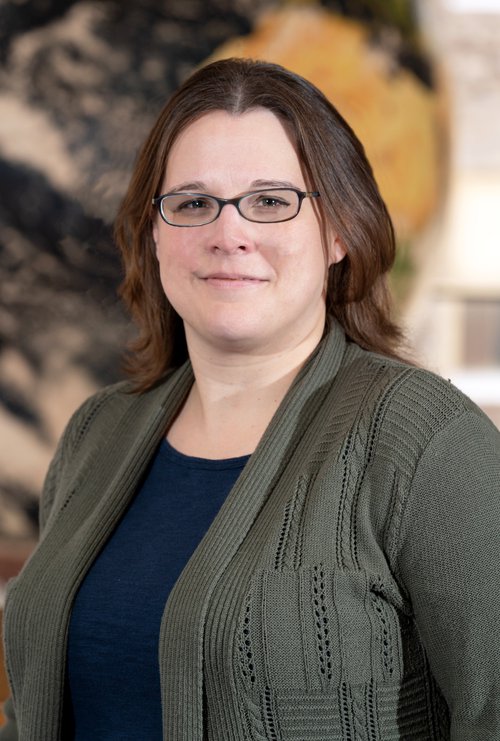
This has been an exciting year! Renovations on the new Paleoecology Lab in Heroy 317A are now complete and the new Multi-Sensor Core Logger (MSCL) is up and running in Heroy 012 (the MUSCLE lab). Both internal and external research groups are now utilizing this exciting new technology for high-resolution sediment and rock core scanning. You can check out pictures and updates related to these new facilities on my website (https://mlchipma.expressions.syr.edu/).
I am pleased to announce that the NSF Navigating the New Arctic and Environmental Engineering programs co-funded my new 3-year collaborative research project entitled Navigating Disturbance Regimes in the New Arctic. This project will combine paleoecology, remote sensing, and landscape modelling to investigate permafrost dynamics in rapidly changing tundra ecosystems. The first field campaign to the North Slope of Alaska is scheduled for summer 2021. In addition, I will use a new SU CUSE grant to further explore long-term permafrost dynamics at a subset of our field sites using seismic basin analysis, in collaboration with Dr. Chris Scholz.
Some new publications came out this academic year from my lab, including a forum paper in Trends in Ecology and Evolution and primary research article in Biology Letters. I am also developing a new course for Fall entitled The Holocene: Climate and Environmental Change. Given the impact of humans on the planet today, a large component of this course will be dedicated to exploring the role of humans in global change throughout the past 12,000 years.
M.S. students Briana Edgerton and Eric Deutsch hit the ground running this year with their research projects, and submitted completed thesis proposals to the department. Briana is currently processing lake-sediment samples for her project to constrain Holocene climate transitions in SW Greenland using stable isotopes of insect remains. Eric has been working with remote sensing datasets to explore the influence of fire on vegetation structure in Alaska.
My lab group also participated community outreach. In October, I introduced a group of students from Boston’s Winsor School to lab techniques for studying environmental change in the Arctic. My group also developed hands-on activities for a presentation at the Museum of Science and Technology in Syracuse in January, followed up by an interactive presentation for the amazing 6th graders at Pine Grove Middle School.
I would also like to welcome two new graduate students to my lab for Fall 2020. Zachary LePage will pursue a Ph.D., and will be working on the newly funded NSF project to investigate fire and permafrost dynamics in Alaska. Zach comes to SU from the University of Maine with a B.S. in Ecology and Environmental Science, including training in paleoecological lab methods. Jessica Garrison will join the M.S. program and will be investigating sedimentary dynamics from Alaskan lake cores using the new MSCL sensor. Jessica received a B.S. in Geology from Western Kentucky University and has an impressive track record of independent research.
Welcome Zach and Jessica!
Suzanne Baldwin
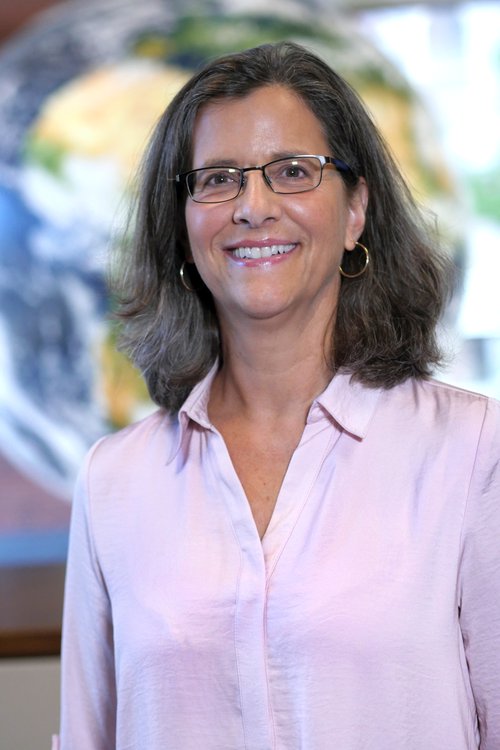
The past year has certainly been a roller coaster ride, but we still had much to celebrate. Joseph Gonzalez successfully defended his PhD in early December and published three papers stemming from his research. Joe is now a post-doc in Prof. Matteo Alvaro’s group (University of Pavia) and will soon begin a prestigious NSF post-doctoral fellowship. We also extend our congratulations to Joe and alumna Emily Baker on their recent engagement! Congratulations to John Mark Brigham who successfully passed his virtual MS thesis defense in April. During his time in the graduate program John Mark distinguished himself as an engaged, conscientious, and enthusiastic TA and was selected as a recipient of Syracuse University’s 2020 Outstanding Teaching Assistant Award. John Mark is now employed as a geologic map editor with the US Geological Survey in Menlo Park Kudos to BSc student Matty Kennelly who was awarded a Syracuse Office of Undergraduate Research and Creative Engagement (SOURCE) grant to conduct research on mineral inclusions in garnets from the Wakonai shear zone in Papua New Guinea. With no access to the Heroy labs following the COVID-19 shut down, he persevered and presented his results at the SOURCE virtual symposium for undergraduate research in May.
We thoroughly enjoyed our collaboration with Dr. Iwona Klonowska this past year, but her thermochronologic research came to a halt in March when she was repatriated to Poland due to the COVID-19 pandemic. Now working in Sweden at the COSC2 (Collisional Orogeny in the Scandinavian Caledonides) drill site, Iwona plans to return when it is safe to travel to the US. In the meantime, we are keeping up with the results of the drilling program online.
In September we hosted PhD student Jan Schönig (University of Göttingen) to collaborate on a study of detrital garnets from Goodenough Island. This summer we are preparing a manuscript on our findings that reveal a story of rock and volatile recycling in the active plate boundary zone of eastern Papua New Guinea.
Since January the pandemic has had a major impact on our lives. International travel began to be severely restricted, and we worked together with collaborators to reschedule fieldwork, symposia, and conferences. Colleagues in Italy and China updated us from their respective countries. My course on Geohazards and Natural Disasters had many international students enrolled whose families were impacted by the pandemic. By mid-March SU closed to all residential activities and we spent spring break preparing to transition to online delivery of our courses. This was no small feat. I am especially grateful to TAs -Laura Demott, Keith Paciga, and Will Fisher - who worked together with me to ensure online delivery of the remaining EAR 106 labs, risk assessment presentations, and even a virtual fieldtrip for 165 students! Zoom meetings have become a daily part of our lives as we continue to work together to plan a successful reopening. Until we are able to meet again in person, please stay safe and well!
Paul Fitzgerald
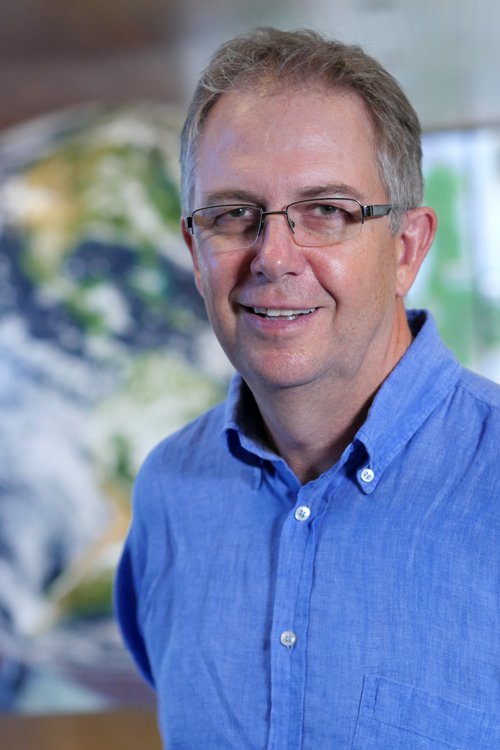
This has been an unprecedented year with respect to the effects of the Covid-19 pandemic. Switching to online teaching over spring break was a steep learning curve, notably for developing asynchronous lectures to be posted online, but the rest of EAR 105 Earth Sciences went relatively smoothly for the 400+ students taught by myself and Prof. Rob Moucha. The TA’s did a fantastic job, but any perception that teaching online is any easier and less time consuming is false. Remarkably, feedback from the students was very positive and they appreciated the time and effort invested. Teaching in Fall 2019 was a different experience with a great group of students in EAR 333 Structural Geology. Switching to this course relatively late after Prof Karson was appointed chair, I was lucky to have John Mark Brigham as a TA, as this spring Profs Baldwin and Thomas plus myself nominated John Mark for an university outstanding TA award, which he won. I have returned to being Director of Graduate Studies, the duties of which has grown considerably in scope since I last filled this role some years ago.
On the research front, before classes started last fall, new PhD student Jacob Rosenthal and I, along with colleagues from University of Alaska, Fairbanks and George Mason University, had a relatively epic field-season on the eastern edge of the Wrangell Mountains in southeastern Alaska. This is spectacular country, with huge mountains formed from the collision of the Yakutat microplate plus huge arc volcanoes. Jacob is doing research related to fault intersections between the Totschunda – Duke River faults and Denali – Totschunda faults. The fission track lab has been flat out in the last year with Jacob (Alaska), Dr Iwona Klonowska (Scandinavian Caledonides) and Nicolas Perez (northern Andes) all learning the technique and preparing samples. CUSE funds will be used to upgrade the computer system controlling our automated fission track stage.
Our book, “Fission track thermochronology and its application to geology” (2019) by Malusà and Fitzgerald continues to be highly cited and is now being translated into Chinese. We expanded on some of the detrital thermochronology principles in the book and published what is possibly my longest paper at 41 journal pages: Malusà and Fitzgerald (2020) “The geologic interpretation of the detrital thermochronology record within a stratigraphic framework, with examples from the European Alps, Taiwan and the Himalayas” in Earth Science Reviews. Also published was Shorten and Fitzgerald (2019) “Post-orogenic thermal history and exhumation of the northern Appalachian Basin: Low temperature thermochronologic constraints” in Basin Research, and Chili has just submitted another paper on the Catskill Mountains to Geology. We had other publications in Geosphere, Tectonics, and Geology; plus papers in review with Tectonics and the Journal of South American Earth Sciences. I was pleased to host 2 Nelson lecturers: Dr Brian Huber from the Smithsonian and Professor Ken Ridgway from Purdue University. Amongst other conferences, Professor Baldwin and myself participated in a two day workshop at Cornell University on geothermal energy, notably the feasibility of drilling ~5 km drillholes to heat the university and scientific opportunities arising from this proposed endeavor. So last year was a very eventful year on all fronts, and from all expectations 2020-2021 will be even more eventful as we continue with the uncertainly of a new Covid-19 teaching world.
Gregory Hoke
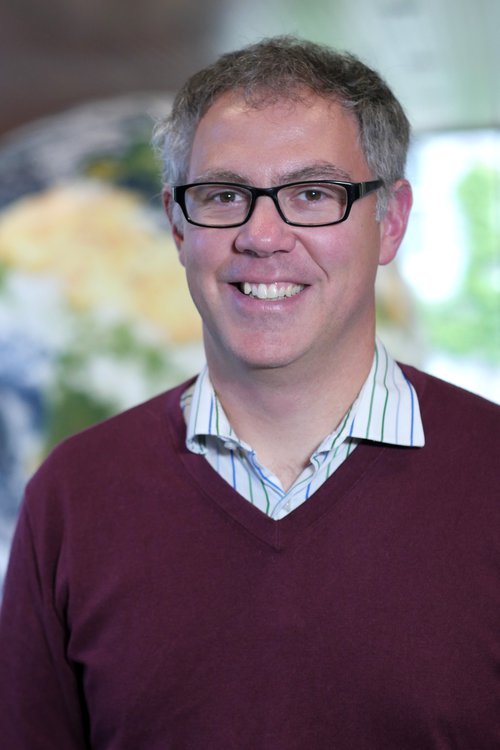
Cześć z Polski! - Hello from Poland!
During the 2019-2020 academic year I represented SU and the USA as a Fulbright Scholar at the Institute for Geosciences within the University of Wrocław (UWr) in Wrocław, Poland. The city of Wrocław, with its distinctly German character and Polish population, is an extremely pleasant and amazingly bike-friendly city. UWr was an amazing host at all levels, including a personal tour of the remarkably restored main university building with the university’s rector along with enrollment in Polish classes for two semesters! I jumped right into my Fulbright research project, a new collaboration with my UWr host, Artur Sobczyk, and University of Silesia colleague Jacek Szczygieł, on cosmogenic nuclide burial dating of sediments in the karst networks of the Sudetes and Tatra Mountains. Many of the speleothems within the cave systems in both ranges are outside the age range of standard speleothem techniques of U-series dating and radiocarbon, so burial dating is an ideal approach for determining the timing and, by extension whether glacial or fluvial processes are responsible for valley deepening. While I had some experience exploring caves in China and New York State, Poland certainly stepped things up a notch, including my experiences in vertical caving. Work with my collaborators has already led to a provocative paper published in Geology, “No valley deepening of the Tatra Mountains (Western Carpathians) during the past 300 ka.”
In May 2019 I was awarded a grant from the Polish Narodowe Centrum Nauki (Polish version of the National Science Foundation) for nearly 1 million Polish Złoty (~ $250 k) to a two year project to complete the work started under the Fulbright award. Much of the funding will go towards the analytical expenses for cosmogenic nuclide measurements, and to build a quartz purification lab similar to my lab at SU to support future sample prep at UWr. My colleagues and I are busy ramping up for the project and planning visits to new sets of caves during the rest of 2020, some of which could be older then 5 Ma!
During the fall semester I co-taught a scientific writing class for first year doctoral students and planned to offer some short courses on the Andes and applications of cosmogenic nuclides in the spring semester; however, the global COVID-19 crisis lead to an unceremonious end to the Fulbright Program in mid-March. By the time the State Department officially canceled Fulbright globally, the idea of flying seemed a much more dangerous than staying put, so I and my family opted to ride out the pandemic in Poland where the initial response was swift and well-coordinated at the national and local levels. I found being abroad during a global pandemic has been an interesting experience, to say the least; I look forward to my return to Syracuse.
Linda Ivany
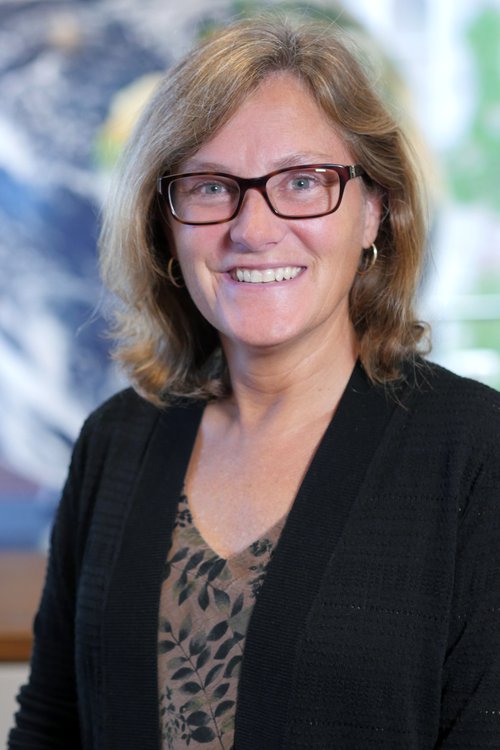
Looking back on this past year, ‘normal’ academic life seems so far away!
August marked a real milestone for me with the Department’s trip to the Canadian Rockies to see the Middle Cambrian Burgess Shale. As a paleontologist, this is one of those ‘must see’ places, like the Cretaceous-Paleogene boundary in Gubbio, Italy, where Walter Alvarez first figured out that the mass extinction was caused by an impact. The Burgess Shale has been called “the single most important fossil discovery ever made” (Ellis Yochelson 1996). It contains an exquisite soft-bodied fauna from shortly after the initial radiation of animal life, thereby providing a window into the products of the Cambrian Explosion. The Department trip to the Burgess Shale last August was most certainly a highlight of my paleontological career!
The fall was a typical semester… in addition to the regular on-campus activities, I made a trip to Santa Cruz CA to speak at a workshop on the Paleocene-Eocene Thermal Maximum, and traveled to Alabama in December with PhD student Daniel Phillipi and Prof. Bruce Wilkinson to join colleagues from the Paleontological Research Institution to study fossiliferous rocks of latest Cretaceous through Paleogene age. I was excited to welcome MS student Josh Owens to our lab after he decided to switch gears midstream and study paleontology and Earth history. He has been working on the geochemistry of brachiopod shells from the local middle Devonian Hamilton Group, trying to evaluate competing hypotheses for the depositional environment of the Marcellus Shale. He should finish up this summer despite the interruptions from COVID. And we all celebrated the successful PhD defense of Emily Judd! She graduated this year with a prestigious Chancellor’s Citation for Excellence in graduate student research and left the country just in time last winter to begin an NSF-funded internship at the National Institute of Water and Atmospheric Research in New Zealand. She wraps that up this summer and begins postdoctoral work with colleagues from the Smithsonian Institution and the University of Arizona. We wish her many (more) successes!
And then COVID happened. It was a remarkable spring semester with the shutdown, classes going entirely online, and everyone becoming intimately familiar with Zoom meetings. And then, on top of continuing uncertainties about the return to campus in the fall, the nation erupted in protest following the murder of George Floyd, and our community rose up in solidarity with Black people to find ways to end systemic racism, including in the geosciences. I am so proud of our graduate students, who came together under MS student Jessie McCraw’s leadership to press the department for more substantive actions to root out and address inequity and implicit bias in our own community and set a positive example for other geoscience departments. We are cautiously optimistic that real meaningful change is in sight for the country… but saddened at the need to once again add ‘this time’ to the end of that statement. Peace and justice to everyone in the coming year.
Christopher Junium

Last year’s update came from the historic confines of the University of St Andrews. The upcoming year was to hold a semester long research leave with travel and field work planned Now, like many, we are mostly working from home and making the best of it. This means working on existing datasets, proposals, prepping for a return to the lab and looking forward to some exciting new instrumentation.
The work last summer in St Andrews yielded an exciting new area of research in multiple sulfur isotopes. Traditional sulfur isotope studies utilize the most abundant mass 34 and 32 stable isotopes, but the lesser abundant mass 33 and 36 open a whole new area of potential. Simply, the 33 and 36 isotopes have an odd behavior that in special circumstances they partition (or fractionate) in a manner that is not proportional to their mass in a process called ‘mass independent fractionation’. This behavior typically only happens when sulfur gases can easily interact with UV light, either when there was no oxygen in the atmosphere like during Archean, or high in Earth’s atmosphere. We have been applying the multiple sulfur isotope system to one of our most exciting mass extinctions and hopefully providing a new context for how this event affected life on Earth.
Back as Syracuse, our focus has been toward ongoing projects on nitrogen isotopes of a whole range of fossil organism shells, including bivalves, ammonites, and corals. The skeletons of calcium carbonate secreting organisms retain an extremely small amount of organic matter that contains nitrogen and carbon, and reflects the diet of ancient organisms. And when they grow serially, like bivalves, we can reconstruct how their diets have changed over their lifespan.
My PhD student Shiv Das has been making excellent progress on his work which is focused on how we interpret shell-associated nitrogen isotope records at high resolutions and in whole shells. This work has of course involved Linda Ivany and our former PhD students Emily Judd and Ben Uveges.
A relatively new NSF-funded project focused on the carbon isotopes of single microfossils is also moving forward nicely. The Precambrian fossil record is sparse, and one of the only commonly found fossils are these microfossils called acritarchs. They are composed of organic matter and may have an algal origin but this is unclear. By using the carbon isotopic composition of single microfossils we can hopefully reveal how these organisms acquired their carbon and more about the environments in which they evolved.
The newest news in the lab is the funding for a new stable isotope mass spectrometer through the NSF MRI program, led by one of our newest faculty members, Tripti Bhattacharya. This mass spec will be coupled to a gas chromatograph and will allow us to make new compound-specific measurement for hydrogen, carbon and nitrogen isotopic compositions. I am particularly excited about the potential for compound specific nitrogen isotope analyses of amino acids and looking forward to a further merging of lab operations. This new mass spec will most benefit grad students, and will allow for a whole new suite of potential collaborations and projects.
Jeffrey Karson
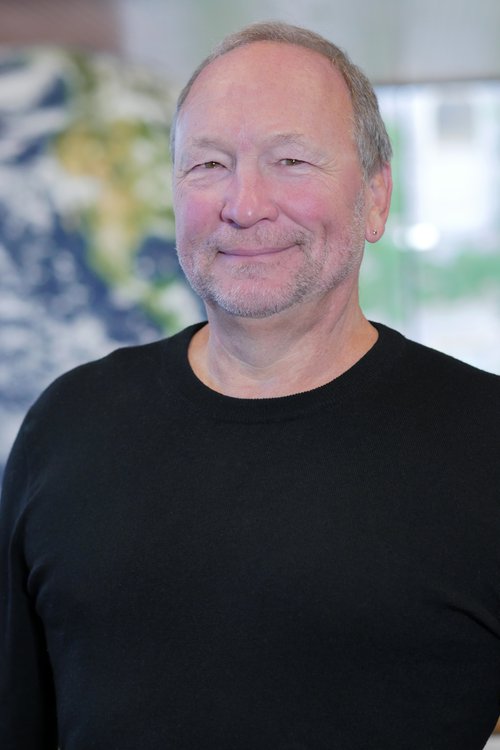
As in years past, my co-workers and I have been focusing on two main research topics: the tectonic evolution of Iceland and experimental lava flows. Our research outside the Department basically came to a halt during the spring with the arrival of the Covid-19 pandemic, forcing us to cancel research travel and plans for experiments. Our work will resume in the fall or as soon as possible.
Our work in Iceland covers a number of themes. We continue to investigate the mode of crustal construction in Iceland (0-18 Ma) as an analog for settings dominated by the construction of a basaltic crust, for example, mid-ocean ridges and volcanic rifts and rifted margins. PhD student Stephen Adeniran is studying the details of upper crustal lava flows and faults and their implications for deeper-level processes. Along with Postdoc James Farrell, former PhD student Andrew Horst, and Icelandic colleagues, we published a paper on how transform faults form in Iceland and what they may be able to tell us about much less accessible transform faults along mid-ocean ridges. I also published a review article on transform faults in the Encyclopedia of Geology.
Our work on experimental lava flows continues to expand. Professor Bob Wysocki, who runs the furnace, pours molten basaltic lava and related materials for our experiments. PhD student Chris Sant is hoping to finish his dissertation soon on several different types of lava flow experiments including the comparisons with natural flows, the diffusion around bubbles and flow over volatile-rich substrates. Postdocs Arianna Soldati (Ludwig Maximilians Universitat) and James Farrell (SU) have spearheaded investigations of the effect of bubbles on lava flow dynamics and exotic iron-rich metallic flows analogous to those that may have occurred on some planetary bodies. Recently, we received funding from a SU CUSE Research Grant to further investigate “ferrovolcanism” in anticipation of an upcoming NASA probe to image an asteroid with possible metallic iron or hybrid iron-basalt flows. Publications on these projects and related work are currently under review.
Christa Kelleher
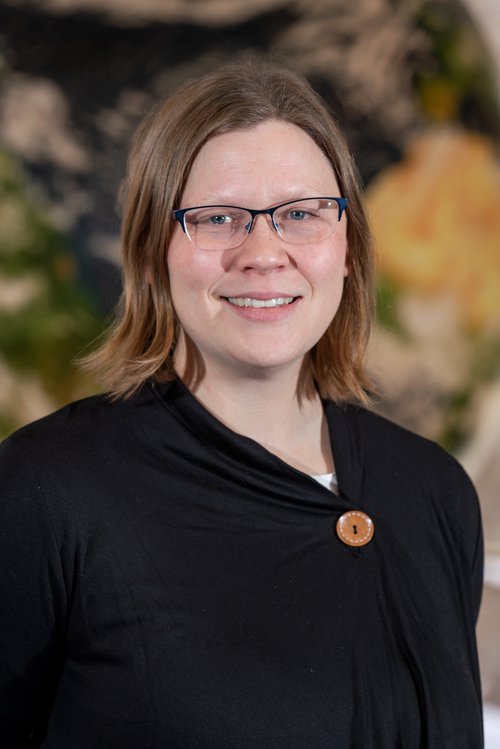
The Computational Hydrology Lab is continuing to explore hydrologic processes and water quality throughout the northeastern US and beyond! We are continuing our United States Department of Agriculture-funded project to explore organic micropollutants across central New York, in collaboration with other SU researchers in Environmental Engineering and Sociology. We have also recently been awarded funding from the National Science Foundation to investigate the impact of beaver-inspired restoration structures on hydrologic processes, in partnership with The Nature Conservancy.
This year, we are saying goodbye to lab member and undergraduate researcher Caroline Weidner, but have welcomed Yngrid Pereira Marques, a Masters of Science student in Civil Engineering, and Eliza Hurst, a Master of Science student in Earth Sciences. We are also excited that Jeff Wade, formerly co-advised with Dr. Laura Lautz, will be joining us to pursue his PhD.
As the leader of this amazing group of researchers, I continue to be impressed by their accomplishments, and am looking forward to seeing what the next year will bring!
Laura Lautz

This academic year has been one of significant transition. In August 2019, my family moved to Northern Virginia, just outside of Washington, DC, where I have started a new position as Program Director for Hydrologic Sciences at the National Science Foundation (NSF). Working at the NSF has been a rewarding and challenging career change, affording me the opportunity to work with scientists across the country to advance the field of hydrology. I regularly talk with early-career and senior investigators to guide them through the proposal preparation, review and award process. I convene panels of experts to review grant proposals and work closely with other Program Directors across the agency in biology, engineering, geography, atmospheric science, and the social sciences. The NSF is a supportive, collaborative, and forward-looking organization dedicated to serving the scientific community and I am grateful to have the opportunity to be a part of the NSF community.
Although I have thoroughly enjoyed the transition to my new role at NSF, I miss working with the students and faculty at Syracuse. I have continued to meet regularly with my research group remotely. Our regular virtual meetings didn’t skip a beat as the academic world rapidly transitioned from in-person to remote work due to COVID-19. We’ve used this year to wrap up research projects, prepare presentations for national conferences, write manuscripts, and work towards degree completion. Despite the significant challenges facing the world in the past several months, my students have risen to the occasion and accomplished so much in this crazy time.
Two of the students in our group – Julio Beltran and Julianne Davis – completed their MS degrees and successfully defended their theses in June 2020! Julio studied nitrate loading and export from an urban stream and Julianne studied patterns of erosion and deposition around Beaver Dam Analogues using remote sensing. Julio is on the job market and already interviewing at the USGS, while Julianne is off to UNC Chapel Hill in the Fall to start a PhD program. Congratulations to Julio and Julianne!
Two other students in our group – J.R. Slosson and Jeff Wade – just recently submitted the results of their research to academic journals for peer review. J.R. analyzed the role of stream-groundwater interactions in regulating road salt loads in urban streams and Jeff analyzed how Beaver Dam Analogues drive stream-groundwater interactions and biogeochemical cycling. Both J.R. and Jeff are in the PhD program and will use these papers as the first chapters of their dissertations. J.R. will continue the remainder of his PhD program with Greg Hoke and Christa Kelleher. Jeff will complete his PhD under the supervision of Christa Kelleher.
Amanda Campbell has been awarded a Research Excellence Doctoral Fellowship for the next academic year, which she will use to wrap up her dissertation in anticipation of a 2021 graduation. Amanda is studying methane in groundwater in areas impacted by hydrofracking and has a paper in preparation to submit this summer. It’s been a year of writing in the Lautz Lab Group!
In closing, the events of the past several months have amplified the urgent need for greater diversity, equity and inclusion in this country, and this is particularly true in the geosciences, including in the field of hydrology. I have seen the ways in which Syracuse University and the National Science Foundation are responding to this call and we need to continue in earnest. For our alumni and friends – I stand with you in advocating for significant change.
Zunli Lu

2020 seems like a year of big changes for everyone. Looking back, I enjoyed teaching Oceanography, it was amazing to see how much more engaged students became after simply touching and observing 3D printed forams passed around in the large auditorium. A great number of undergraduate students are very curious when we show them a world they never knew existed. On the research front, march into the Paleozoic! The Precambrian atmosphere and Cenozoic oceans have produced decades of exciting discoveries about the evolution of life and Earth surface environment. It’s the Paleozoic’s turn and a lot of Paleozoic rocks/fossils are waiting for us to dig into. Geochemical proxies certainly will continue to help us hammer out nice stories one after another. Serving on University Senate is one eye-opening experience I had this year, probably equally rewarding as being the Director of Graduate Studies in the past in terms of service role. Learning how the university operates is as interesting as learning how the Earth system works.
I continue to look for highly motivated graduate students. Wanyi successfully defended her PhD with a Chancellor’s Citation and a Science paper. She received a prestigious fellowship at Woods Hole Oceanographic Institution. Ruliang had two papers accepted before his qualifying exam by staple journals of our field (Geochimica et Cosmochimica Acta; Precambrian Research).
Life is bright if we try. Fishing and cooking bring me some much joy even during the darkest quarantine time. Technology (e.g. ZOOM) has obliterated any excuse for not connecting with friends around the world. Online teaching and conferences may actually have their unique positives if we choose to see them.
Robert Moucha

In the fall of 2019, we had two new additions to our group. I am excited to introduce to you April Langhans (SU-Fellow PhD Student) and Keith Paciga (MS Student).
April joined our group with an MS under her belt from University of Texas at Dallas where she was part of the paleomagnetic group studying the Huckleberry Ridge Tuff in the Yellowstone region. April’s PhD project will focus on modelling the feedbacks between surficial processes and tectonics in extensional systems. April will employ geodynamical modeling of rifting coupled to a surface processes model subject to long-term changes in climate in an effort to understand the role of sediment and lake loading in in regions such as the East African rift systems. April is also interested in exploring the role of magnetism in rift evolution.
Keith joined our group from SUNY Binghamton where he pursued undergraduate research in the seismology group monitoring seismic activity due to fracking. Keith will concentrate his efforts in modeling landscape evolution in extensional systems, particularly the effect of horizontal advection of topography in models of rifting. Keith’s models will be used to better understand the topographical evolution of the East African rift system.
In other news, we have completed our 2D modeling study of the evolution of the North American Midcontinental Rift system and we are in the midst of submitting a number of manuscripts focusing on the geodynamics, petrology and geochemistry.
Scott Samson
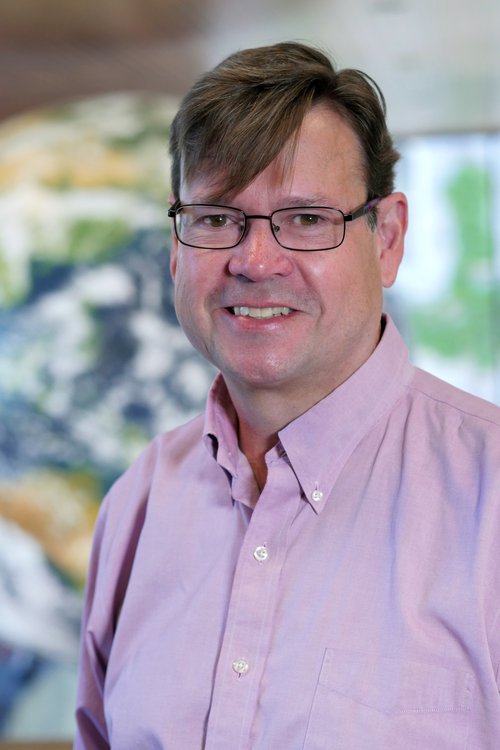
What a year. It started off with my grad student Sarah Kittross graduating with a MS in the summer followed by a whirlwind of travel, Australia, Scotland, British Columbia and then Spain just before Fall classes started. Two new grad students, John St Denny (MS) and Will Fisher (PhD) joined my group in the Fall bringing my ‘brood’ up to four. While the newbies were busy taking classes my senior student Kyle and I went off to University of Wisconsin for a week to analyze the oxygen isotope composition of individual zircon crystals and their quartz inclusions – an extremely difficult set of measurements to make. All went well and Kyle got a beautiful data set – the last one needed before he writes his dissertation.
The next adventure was a trip to New Zealand with new student Will. We went just before spring break along with two of my colleagues from Cal State Northridge (the first place Pat Bickford started teaching!). We started in Dunedin, the southern part of the South Island, and did a clockwise loop around South Island, collecting alluvium from major rivers as well as a few key beach sand localities. Will’s thesis project is to compare the information we get from determining the ages and chemistry of detrital accessory minerals such as zircon, monazite, rutile, and titanite with comparable data from bedrock samples as part of a major new initiative being performed by the NZ Geological Survey. The goal is to try to determine if detrital minerals are really an accurate reflection of bedrock geology and hence of past tectonic events. The field work was a great success, the weather cooperated beautifully, and scenery was gorgeous. Sadly we finished our work just as the coronavirus had begun in earnest – we actually got the last flight out of NZ to USA! By the time Will and I were back SU had closed down. Thus, like the rest of the faulty at SU I began the very difficult task of converting my course to an on-line one (not too easy to teach a Historical Geology lab when it is on line!). Since then I have one student writing his dissertation chapters, one studying for her PhD qualification exam and revising her thesis proposal, and the other two have microscopes and supplies from my lab to continue to do lab work from their homes. None of it ideal, but at least we are making as much progress as possible under these difficult circumstances. With luck, we will be some of the first allowed back onto campus – my labs all have extremely restricted access so we should be safer than almost anyone at SU! I hope all of our alums and friends of the Department are also safe and doing well.
Christopher Scholz
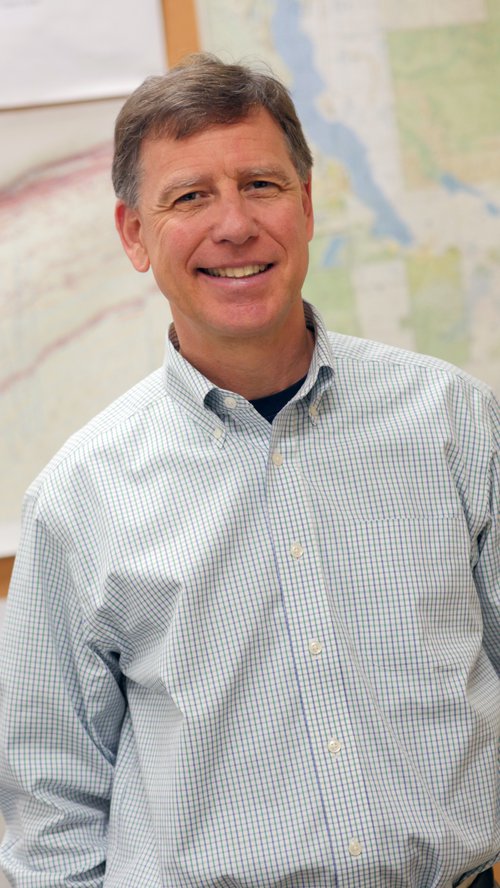
This past year we welcomed new students Laura Streib (Ph.D.) and McKenzie Brannon (M.S.) to our research group, along with Fu Sheng who is a 1-year visiting scholar & Ph.D. student at the China University of Petroleum. Laura is developing several new paleolimnology-paleoclimatology projects, and McKenzie is working on the sedimentology of Skaneateles Lake to better understand the flux of nutrients from surface sediments. Fu Sheng is modeling lacustrine carbonate reservoirs observed in extensional systems. We congratulate Laura Demott on completing her Ph.D.! Laura will stay at Syracuse on a post-doctoral appointment this year to continue her research on lacustrine carbonate systems in extensional environments. We also bade farewell to Research Assistant Professor James Muirhead, who departed for a lectureship at the University of Auckland, returning to his Kiwi roots. James and Laura have both been remarkably productive during their time at Syracuse, each with a number of prominent publications. Doctoral students Nicholas Zaremba, Lachlan Wright, and Shaidu Shaban all passed their qualifying exams, and are making terrific progress on their research. Also, Lachlan and Nick published their first dissertation research papers this past year. As always lab managers Peter Cattaneo and Jacqueline Corbett have provided stalwart support of the research in our seismic analysis and sediment core laboratories.
With support from NSF, we executed a multichannel seismic reflection survey of Oneida Lake this past summer. Nick helped manage the data acquisition program and is using these new data as part of his dissertation research. Shaidu and Chris traveled to Dar es Salaam, Tanzania in June to help run a workshop focused on planning a new scientific drilling program on Lake Tanganyika. The first proposal supporting this landmark drilling effort was recently awarded funding from the International Continental Scientific Drilling Program, and we look forward to a very exciting (and challenging) international & interdisciplinary effort over the coming several years.
With Melissa Chipman and Linda Ivany we installed several new important instruments in Heroy Geology Laboratory this year: with Melissa, a GEOTEK multisensor core logger (funded by NSF’s Instrumentation and Facilities program) and with Linda and other faculty colleagues, a new benchtop scanning electron microscope (also supported by the College of Arts and Sciences and the Office of Research). These new instruments are already generating outstanding new data sets and supporting a variety of research projects. Along with University Professor Charles Driscoll in Civil and Environmental Engineering we started an investigation into the sedimentology of Skaneateles Lake, to better understand the sources of nutrients that are feeding Harmful Algal Blooms in the waterbody that is the primary source of drinking water for the City of Syracuse. Finally, together with Rob Moucha’s group we have a begun new industry-supported study investigating the interactions of surface process and the solid earth (a.k.a. the RhINO Project - Rift-Climate-Earth Surface Interactions - Rift Basin Stratigraphy and Implications for Global Exploration). We look forward to working closely with Rob and his students over the next several years!
Jay Thomas
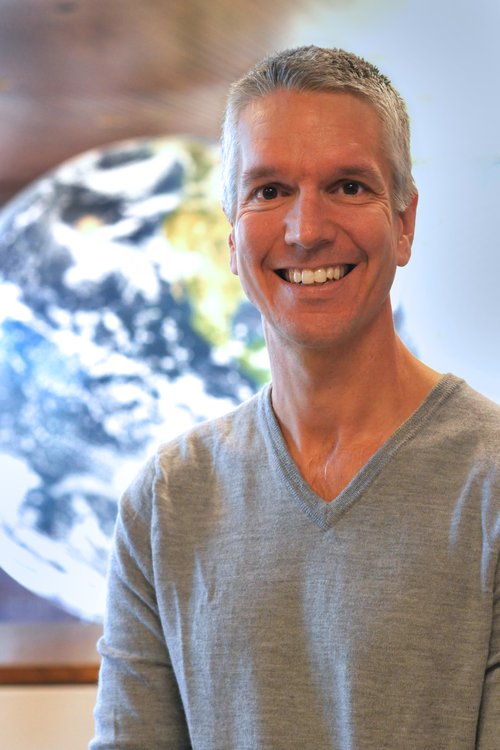
The students and researchers in my group made great research progress and discoveries in our experimental and analytical facilities this past year. Our research efforts continue to focus on determining the pressure (depth), temperature and timescales of rock formation. Our group routinely performs laboratory-based experiments to reproduce conditions that exist in or on the Earth to make crystals, melts and rocks. The experimental studies provide fundamental information on the origins of geologic materials that cannot be obtained solely from empirical studies of natural samples. Field-based studies form an important complementary research component that guides our laboratory experimentation and provides ‘ground truth’ information.
Our research group used our experimental and analytical facilities to develop new methods for using quartz inclusions in garnet to uniquely determine crystallization depths and temperatures, developed a new and improved Ti-in-quartz solubility model for thermobarometry, calibrated an Al-in-quartz thermobarometer, discovered a metamorphic reaction that can operate to change the mineralogy of a rock faster than any previously reported process, evaluated how prolonged storage of rocks at high-grade metamorphic conditions affects the structures of strained mineral inclusions used for thermobarometry, investigated low-temperature crystallization of granitic composition magmas, and we are currently developing new thermobarometric approaches for carbon-bearing rocks.
In 2019–2020 our group members traveled extensively to conduct field work, perform analyses at other laboratories, and present results at professional meetings. With limited travel possible these days, during the upcoming months I look forward to expanding field studies throughout the Adirondack region and continued work on extensive sample collections from around the world. I am also excited to learn new ways for sharing our discoveries with colleagues around the world!
